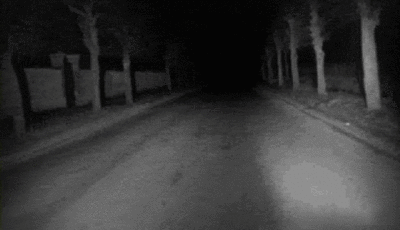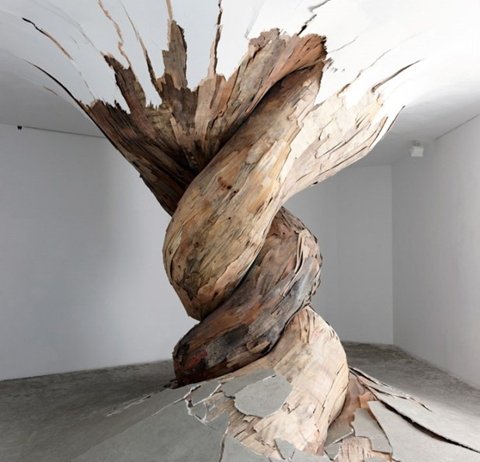The arhats – those perfectly enlightened beings who had sat with the Buddha, tirelessly meditating, extending benevolence and kindness to others with every breath – offer a parable about themselves to the Buddha. They are like a man who gets drunk at a party, and a friend (the Buddha) sews a priceless jewel into their coat. They wander for many years on a hard road, the road of practice, the road of their own life, and then they meet their friend who says that there’s no reason to work so hard, they have a priceless jewel in their coat that can pay for everything they need. The jewel is the Lotus Sutra.
The jewel is also Dorothy’s ruby red slippers. The yellow brick road is the 8-fold path. The scarecrow, the lion, the tin man and the trusty dog Toto are sangha. The emerald city is the mula bandha. And at the end of the road, when Dorothy at last has her audience with the wizard, he tells her that she already has everything she needs. The slippers can take her “home,” a codeword for this present moment. Of course when she gets there everything is different, ie. in colour, transformed by her journey (which never really ends) on the yellow brick road of her life.

Philip Whalen (1923-2002)
In every scene there’s always a notable someone who inspired and stood behind it, but who didn’t receive recognition when the spotlight flickered past. Philip Whalen inspired so many poets in San Francisco’s beat scene. How did he wind up at the Zen Centre?
The Hartford Street Zen Center, temple name Issan-ji, is a Soto Zen practice center located in the Castro district of San Francisco. Issan Dorsey (a former drug addict, sex worker and drag queen) brought the center from its early beginnings as The Gay Buddhist Club of 1980 to the modern-day Hartford Street Zen Center, becoming Abbot there in 1989. He is most remembered for establishing the Maitri Hospice in 1987 for students and friends dying of AIDS during the spread of the epidemic in the 1980s—the first Buddhist hospice of its kind in the United States. Many of his former students and biographers have observed that Dorsey was the embodiment of a bodhisattva.
Dorsey died in 1990. For a time the center leased a building next door to house the sick, eventually offering nine hospice beds for persons in extremis. The second Abbot was Kijun Steve Allen, who departed after a difficult tenure of one year. In 1991 poet Zenshin Philip Whalen assumed the Abbacy, until ill health obliged him to retire in 1996; he died in 2002.
The Lotus Sutra, Naturalized by Philip Whalen
I got drunk at your house
You put that diamond in my shirt pocket
How am I supposed to know?
Laying there in drunk tank
Strange town don’t nobody know
Get out of jail at last you say
“You already spend that diamond?”
How am I going to know?
I-Maker
We all have this jewel in our hearts. What is this jewel that we all have? Perhaps it’s the ability to be imaginative. You can’t get out of your viewpoint, but you can multiply it. You can expand the number of perspectives, and thereby grant space to the dark gravity of a single point of view. If you don’t know how to work with your imagination, then it works on you. The asmita is the storyteller, literally “the I-maker.” It superimposes the story of “I” onto my experience. As if that was my rain hitting my face. As if this is my face. As if this face belonged to me. The Lotus Sutra suggests that our ability to recreate or to heal comes from our ability to re-imagine our point of view, the story of “I” each of us is forever telling ourselves.
Japan
After the tsunami there are 17,000 dead in Japan, and 17,000 more are missing. 1/4 of the people who stayed at the Fukushima Daiichi nuclear plant are dead. Because it has 53 nuclear plants, all planted on fault lines, Japan has done more work than any other country researching earthquakes, back up plans, the contact narrative of power and geography. But everything failed. There were four sets of backup systems at the Daiichi plant and they all failed.
When cities are devastated, even though businesses are wiped out the landowners don’t change. So the city gets rebuilt inside old patterns. Innovation doesn’t come out of disaster. All the money that Japan has raised will go towards cleaning up, not for something new. It’s a failure of imagination not to rework the values of a city, of a society.
Maybe the storyteller, the asmita, the I-maker, is like a phoenix, who rises from the ashes of the old personality – the one who experienced the shock, the loss of your best friend, your lover – and who is now able to tell a different story. Instead of: he left you because you were small at heart, the storymaker might entertain another tale. You both made a choice, he doesn’t really listen to you in the way you need to be heard, and as a result you can’t be present for what he needs. Perhaps the jewel in the coat is the shifting perspectives, the imaginative mobility, of the storyteller.
Treasure Tower
A stupa is a massive gravestone, often circular, that contains precious relics. Whenever The Lotus Sutra is delivered, a massive stupa or treasure tower, rises from the ground and soars into the sky piercing 33 realms.
The number 33 is auspicious because there are 33 deities presiding over the human realm. A deity is not a God but a perspective. What a relief to find out there are only 33 perspectives! Each deity is depicted in a different asana. Imagine the asana perspectives of the past, greed, sex, the family, the what-can-it-do-for-me point of view. How can you see your life from each of these perspectives? To let the different perspectives flow through you? It requires an act of imagination. Opening your heart and experience with compassion requires an act of imagination.
When the stupa appears a great voice sounds out from it, coming from a Buddha called the Great Joy of Teaching. But there is always someone in a crowd like Ananda who can feel and express the doubts of those gathered. He asks, “How will this go on? How can these teachings endure?” The Buddha of Great Joy answers that even if he dies, if someone teaches the Lotus Sutra this stupa will rise up out of the ground. A stupa is related to a funeral. If you open your heart in stillness and become aware of time, then you’re outside of time. You open up to the timelessness of time. Then this room becomes a stupa and every rain drop is a jewel.
Funeral
The world is really like an eternal funeral. Mindfulness is also a practice of mourning, paying attention to and then letting go of one moment after another. Each moment is a funeral. It takes a lot of concentration in sitting practice to be able to see a thought fall away and fall apart, before the next thought arises. It’s easier to see the arising of thoughts.
Inside the stupa there is the Buddha and the assembled want to know: what does the Buddha’s body look like? The answer? All other Buddhas are a replication of this body. In other words, anyone who is awake looks like this Buddha. And they have to teach the Lotus Sutra. Then the Buddha shoots white light out of the tuft of hair between his eyebrows and lights up worlds upon worlds. It’s like when you wake up and see something in your life, and stay awake. This new ability to see, this new perspective, then shines onto every other part of your life. For most of us this is a form of torture, because we only want to see what we want to see.
The Buddha sees from his third eye. To see clearly means not using the usual two eyes, the habitual perspective. The Buddha uses his third eye to light up all the other Buddhas. It’s like psychic landfill. All the Buddhas then begin to move towards him on his strong beams of light which are like highways.
Plot Twist
But wait. Suddenly, a plot twist. The Buddha of the 10 Directions (so many Buddhas, so little time) has to go to Saha, the world of endurance (where things have to be endured), the one place the light is having a hard time lighting up. This is a place that is beneath the ocean, it is a world beneath this world. Can you feel the weight, the pressure, that is weighing down this world? This Buddha goes to saha because that’s where people really need his wisdom.
Every Buddha has an attendant who is a bodhisattva. If they were Jewish they might be called bubbysattvas. Everyone needs someone to look after them. What do you do when you cry? When you’re too pure you don’t feel enough, so the bodhisattva is there to grieve with you, and to rub your back so you can feel something.
Then Buddha creates lion seats for everyone to sit on. What are we all going to sit on? Lion seats. He makes them out of jeweled trees. Of course. Sakyamuni joins the Buddha already in the stupa. They sit together. And then everyone starts levitating, all of the four kinds of believers (monks, nuns, lay men, lay women).
Stories
In meditation practice, storytelling is often fingered as the enemy. Oh no, not that. Let’s try to let go of every kind of storytelling. At this weekend’s meditation retreat one person said they wanted to go blank. But “blank” is a construct.” And the person who is going to go blank, is another construct. Can we get quiet enough to see this? Perhaps realizing Buddha nature is allowing the storyteller to tell the stories of the culture. You see the same patterns, variations on the same stories, repeating in culture after culture. Maybe that’s what has been sewn into our coats. Maybe religion was born at the moment when language was created. Religion is a way of representing reality, converting it into images and words. The stories are fine, there’s no problem with them, until they become fixed and rigid and you can’t let go of them.
In our practice we’re not trying to get rid of thinking. Or of storytelling. Storytelling is great, it allows us to jump into different perspectives, to imagine different lives. To rebuild and heal.

Buddha Nature
Our Buddha nature is not a sparkling cloud, but a place of delusion. It’s the capacity for our imagination to shapeshift our delusions that is our practice, this is what we’re doing in sitting practice. Then fresh ideas can come forward. Instead of being caught by the small fish which are always jumping, we can wait for the big fish. The big ideas. The big shifts in perspective. If this happens while you’re writing a book or painting your painting, you know that it didn’t come from you, you’re just there on the other end to receive it, like a gift. That’s why intellectual copyright is so absurd. You can’t own an idea, because the ideas don’t come from you. And of course there is no you. Every construct you create in your imagination is a phantom city. Every notion you cherish and hold dear: of family, of what the future holds, of what it means to practice. So you need to have faith.
When you get to the bottom of your exhale, quietly attentive, not spinning in distracted stories, but flowing down through the central column which is so very clear, until the asmita, the I-maker, starts to dissolve, an automatic defense mechanism kicks in. A new formula appears to express this new experience, and you’re back in storytelling land again. Can you get so quiet that you can watch your mind creating scaffolding for your experience? These scaffoldings are all phantom cities. They could be religion, or science, or your fave sports team, or your deepest love, or preferred addictions. This is where pleasure enters the picture. The greatest pleasure you can feel is the pleasure of letting go. You think that the object you’re after (which is valued because of your ideals) is going to give you pleasure. An object like nirvana for instance. Oh, when I reach nirvana it’s going to be so good, I’m going to bliss out and everything will be fine. But what you love is the image of the object. You have to let go of the image in order to experience the object. Many people are so addicted or spellbound by their stories, that they can’t let go of them. They’re monotheists. They can’t experience the thing that story promises because that would mean letting go of the story. The yogi works to see the image and the construct around the image, and practices letting go. They experience the pleasure of non-attachment, and this pleasure brings you back here, to this moment.
You might go from boyfriend to boyfriend – this one’s hands are too large, this one has bad eating habits. Until at some point you realize you’re turning them all into the same person. Oh hi dad. It’s you again. And then of course: it’s me again. We both get to play reliable parts. You don’t mind if I cast you in my play do you? Hey, you get to play almost the lead role. That is reserved for myself of course, and I’m having a relationship with a figment, another part of myself, and I’ll give that figment your name. Just sign here. Until death do us part. Relationships can be so threatening to the formula of myself.
Who can teach The Lotus Sutra? It takes a Buddha and a Buddha. If there is not a Buddha listening, then it isn’t being spoken. Listening is also speaking. The part of me that can’t drop the image can’t bear The Lotus Sutra. Lotus Sutra means dharma flowering, and this flowering is always in motion, always changing. The stupa this chapter describes is a funerary monument for your convictions. How is it possible to replace the idea of transcendence with the craft of building and enjoying your life?




